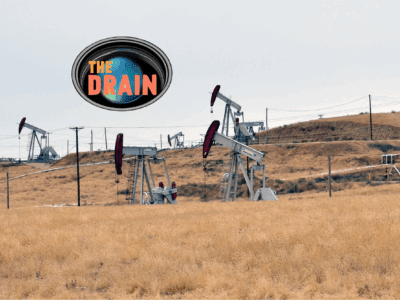Global Warming and Changing Weather
Why DOESN’T global warming just raise the temperature everywhere a little bit?
The amount of global warming that scientists are predicting doesn’t seem like that big a deal — maybe about 4 degrees Fahrenheit if we control emissions, up to maybe 12 if we don’t. But as I’ve said a hundred times — and the experts have said a lot more often than that — we won’t get just a general average heat increase everywhere. Instead, we’re going to get a lot of shifts in weather and a lot more extreme weather. Why?
One answer to that question is: because the models and the evidence say so. Or even more directly, because the scientists say so. That’s actually not a bad answer — there’s a lot of science that we all just to have to accept because only the experts really understand it, ranging from how computer chips work to just how DNA controls what happens in cells. But it would be nice to know a little more about why global warming doesn’t just add a little bit of toastiness to the whole plant.
One place to start is to ask why that isn’t true of the heat the planet already receives from the sun. You can imagine that, after billions of years of sunshine, the planet might be like a well-baked casserole, with even texture and moisture throughout. Why doesn’t that happen?
The basic reason is that the planet doesn’t heat everywhere equally. The daytime side of the planet absorbs heat, the night-time side radiates it back to space. The tropics warm more than the temperate zones, which warm more than the poles, because the sun hits them at different angles. The ocean temperatures don’t fluctuate as much as the temperatures on land because water has so much capacity to absorb heat, but different locations and depths get different amounts of heat. In some sense, the planet would like to turn into Casserole Earth, with all these differences ironed out, but it can’t ever get there because heat gets radiated away into space. So there are a lot of heat flows from colder places to hotter places, but the dynamics are complicated and produce lots of changing local differences. The sharpness of the differences is increased by the role of water in the atmosphere, and in particular it makes a lot of difference whether water (either on earth or high in the atmosphere where it’s colder) is just above or just below 32 degrees Fahrenheit. So we don’t get Casserole Earth, or if we do, it’s a pretty lousy casserole, with hot spots, ice chunks, dry places, and soggy ones. Because of all the complicated stuff involved in meteorology, things shift around in ways that get very intricate and hard to predict precisely.
If the earth were Metal World, a giant steel ballbearing covered with a layer of mercury, instead of rock covered by water and a layer of air, this heat redistribution would happen a lot more uniformly because metals are good heat conductors. But air, water, and rocks aren’t good heat conductors, so the heat gets moved mostly through convection currents and the evaporation, condensation, freezing, and melting of water, a really messy set of processes.
Similarly, global warming doesn’t get evenly distributed, and that shifts the differences that drive global weather patterns. For instance, the Arctic is heating up a lot faster than other places for a variety of reasons, one of them simply that when ice melts it’s replaced by open ground or water, both of which are darker and absorb more heat. And that melts more ice, etc. So the difference in temperatures between the tropics and the pole isn’t as big as it used to be. There is going to be more warming on land than in the oceans, so that changes the heat situation too. Most of the extra heat is actually coming into the tropics, but the flow pattern poleward is different. If you think of weather as basically driven by heat flows between areas, those heat flows are all changing. Again, water sharpens differences because a lot of energy gets used or released when water changes phase from ice to liquid to vapor.
So, the basic answer to why climate change messes up weather patterns rather than just raising temperatures evenly is that we don’t live on Casserole Earth or Metal World. Our planet has a lot of heat differentials, unlike Casserole Earth, and a really balky, erratic, and sometimes violent system for moving heat around, unlike Metal World. So we’re going to see a lot of big changes, not just a gentle warming effect.
Reader Comments
2 Replies to “Global Warming and Changing Weather”
Comments are closed.






Does anyone at all familiar with this not understand what 4 degrees of warming entails? See eg James Hansen’s web site.
Prof. Farber, would it be possible to form a Union of Academicians to produce a United Peoples of the World to Save Earth and the Human Race?